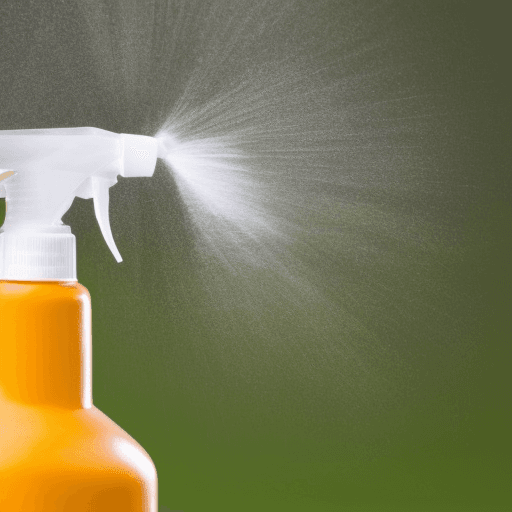| Complexity level: | 5 |
| Project cost ($): | 180 |
| Time required: | 1 hour to prepare. Incubation period of 24 hours. 10 minutes for observation. |
| Material availability: | All of the materials mentioned should be available at the school laboratory. |
| Safety concerns: | Students should wear gloves and goggles at all times to prevent infection as they are dealing with microorganisms. Adult supervision is highly encouraged. |
Hypothesis
The lower the concentration of disinfectant used, the higher the level of bacterial resistance.
Overview
How does the disinfectant kill bacteria?
Disinfectants and antibiotics share the same purpose in general, which is to kill bacteria. Disinfectants kill bacteria by disrupting the cellular mechanisms of the bacteria. This is achieved with the disinfectant binding to certain key proteins in the bacteria which are vital for the bacteria’s survival. Some of these key proteins include the cell wall which surrounds the bacteria. With the destruction of the cell wall, the cell is split apart and eventually destroyed.
How does bacteria develop resistance?
Bacteria develop resistance through mutation. Mutation involves the random changing of the genes of the bacteria. Once a group of bacteria develops resistance, it can spread its resistant property to other surrounding bacteria through a mechanism known as plasmid exchange. From the natural selection theory proposed by the late Charles Darwin, over time, bacteria which have developed resistance will survive to produce offspring which share the same DNA. New bacteria are reproduced through binary fission give rise to a new breed of bacteria which are resistant to that disinfectant.
It is hypothesized that bacteria exposed to lower concentrations of disinfectant will develop immunity. This is because the concentration is not high enough to kill it yet sufficient for the bacteria to develop the necessary adaptations to resist the effects of the disinfectants.
Scientific Terms
Materials
The materials required for this experiment are as follows:
- Disinfectant e.g. Dettol
- Water
- 5 Petri dish
- Nutrient agar
- Escherichia coli culture
- Syringe
- Sterile cotton swab
- Goggles
- Gloves
- Pincers
- Cellophane tape
- Incubator
- Alcohol wipes
- 5 50 ml Beaker
- 5 Filter paper disks
- Stirrer
- Marker
Procedure
1. The independent variable of this experiment is the concentration of disinfectant used, which is 10%, 20%, 30%, 40% and 50% respectively. The dependent variable is the diameter of the zone of inhibition formed around the bacteria culture. The constants in this experiment include using the same type of bacteria, type of disinfectant, temperature of incubator and incubation time.
2. Prepare a sterile area in the science laboratory Wipe the work table’s surface area and all the materials with alcohol soaked wipes. Do not wipe the nutrient culture or open the cover of the Petri dish. Leave the bacteria colony aside and away from this sterile area. Remember to wash your hands with disinfectants and maintain dry hands at all times throughout this experiment.
3. Prepare the 5 samples of different concentrations using water to dilute the sample. Label each beaker to reflect the concentration of the solution. Stir thoroughly to make sure the solution is homogenous. Use the following proportions to make up the samples
a. 50% concentration: 10 ml of water and 10 ml of disinfectant
b. 40% concentration: 12 ml of water and 8 ml of disinfectant
c. 30% concentration: 14 ml of water and 6 ml of disinfectant
d. 20% concentration: 16 ml of water and 4 ml of disinfectant
e. 10% concentration: 18 ml of water and 2 ml of disinfectant
4. Dip a filter paper disk into each solution
5. Now, start the inoculation procedure.
6. Put on your goggles and gloves.
7. Carefully remove the cover of a Petri dish and place it face down on the sterile area. (Do this to minimize pollutants which can easily stick to the agar)
8. Remove the cover of the bottle of E.Coli culture and using the syringe, obtain a sample of about 0.5 ml of bacteria. After that, hold up the Petri dish (currently face down on the table) and inject the sample onto the surface of the agar. Using the cotton swab, streak the bacteria sample uniformly across the dish.
9. After you have finished streaking, place a filter paper disk onto the surface of the agar. Use a pair of pincers. Put the cover back onto the Petri dish and seal the Petri dish with Cellophane tape.
10. Label the Petri disk according to the concentration of the pre-soaked filter paper disk.
11. Leave the Petri dishes in the incubator for 24 hours at 38 degree Celsius.
12. Repeat steps 7 to 11 for the rest of the samples.
Results
The results obtained in this experiment are recorded in the table as below.
| Concentration of disinfectant (%) | Diameter of zone of inhibition (cm) |
| 10 | 5 |
| 20 | 4 |
| 30 | 6.5 |
| 40 | 5 |
| 50 | 7 |
Conclusion
The hypothesis is rejected because as the concentration of the disinfectant is decreased, the bacteria do not clearly show more resistance to the disinfectant.
It is important for us to study the impact of usage of disinfectants or antibiotics on the resistance of bacteria. Misused antibiotics can lead to unnecessary build up of resistance in the bacteria. Once bacteria become resistant, a stronger dose or different types of antibiotics have to be produced in order to fight the new strain of bacteria.
Also consider
What happens if another type of bacteria is used instead of E.Coli?
What results would you be able to observe if the incubator is set to 50 degrees Celsius?
What if another disinfectant was used?
Leave the Petri dishes in the incubator for another day. Would the zone of inhibition change? If so, how and why?
References
http://www.chemheritage.org/EducationalServices/pharm/antibiot/activity/reslab.htm
http://en.wikipedia.org/wiki/Disinfectant
http://www.scienceteacherprogram.org/biology/Webster02.html

